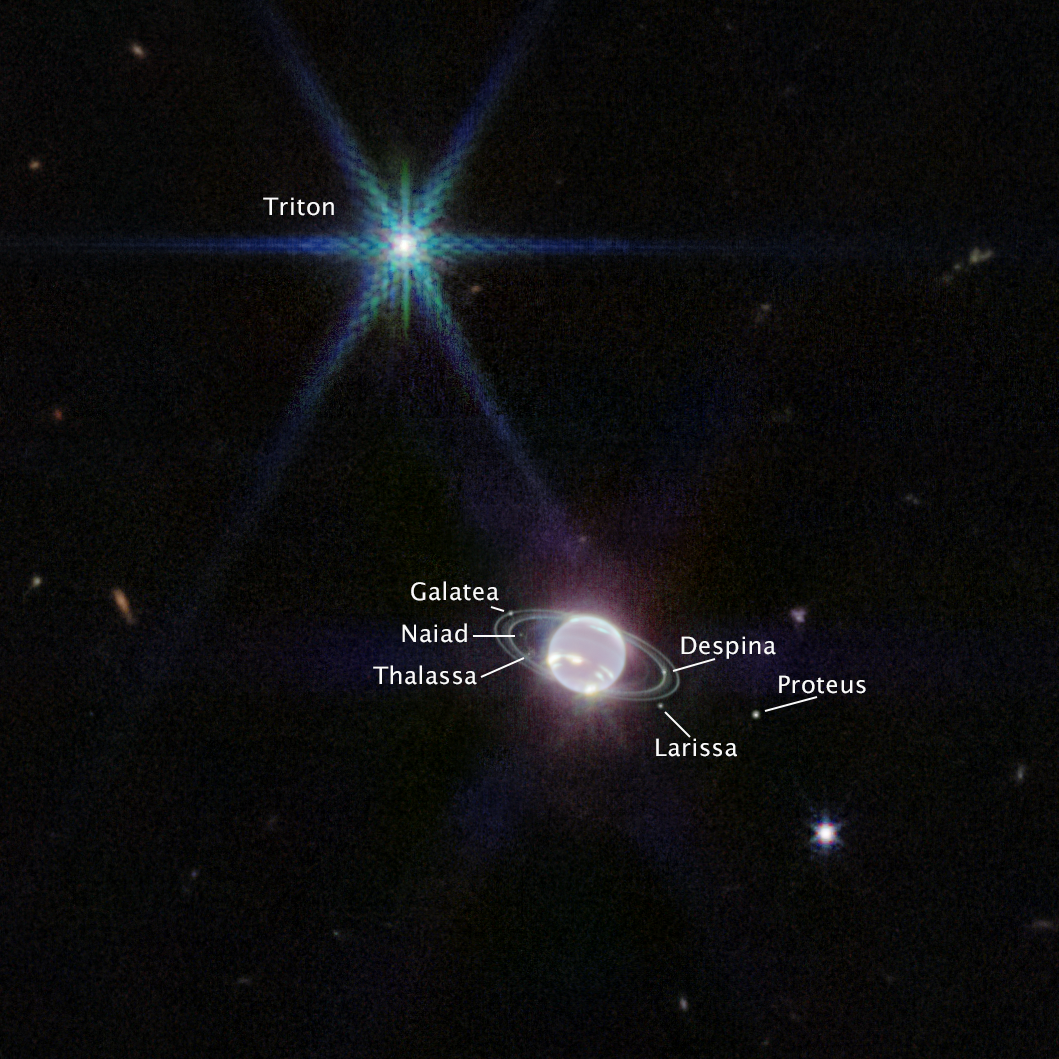Just released: NASA's Webb captures clearest view of Neptune's rings in more than 30 years

The James Webb Space Telescope (JWST) has captured the clearest view of Neptune's rings in more than 30 years. Webb's new image provides a crisp view of the planet's rings and also clearly shows the ice giant's fainter dust bands.
“It has been three decades since we last saw these faint, dusty rings, and this is the first time we've seen them in the infrared," said Heidi Hammel, a Neptune system expert and interdisciplinary scientist for Webb.
Hey Neptune. Did you ring? 👋Webb’s latest image is the clearest look at Neptune's rings in 30+ years, and our first time seeing them in infrared light. Take in Webb's ghostly, ethereal views of the planet and its dust bands, rings and moons: https://t.co/Jd09henF1F #IAC2022 pic.twitter.com/17QNXj23ow
— NASA Webb Telescope (@NASAWebb) September 21, 2022
Wondering why Neptune does not appear blue in this Webb image?
Neptune's signature blue appearance in Hubble Space Telescope images is caused by small amounts of gaseous methane. According to NASA, Webb's Near-Infrared Camera (NIRCam) images objects in the near-infrared range from 0.6 to 5 microns. The methane gas so strongly absorbs red and infrared light that the planet is quite dark at these near-infrared wavelengths, except where high-altitude clouds are present. Such methane-ice clouds are prominent as bright streaks and spots, which reflect sunlight before it is absorbed by methane gas.
 Image Credits: NASA, ESA, CSA, STScI
Image Credits: NASA, ESA, CSA, STScI
Webb also captured seven of Neptune's 14 known moons - Galatea, Naiad, Thalassa, Despina, Proteus, Larissa, and Triton - with the large and unusual moon Triton dominating this image as a very bright point of light sporting the signature diffraction spikes seen in many of Webb's images.
Triton orbits Neptune in an unusual backward (retrograde) orbit. In Webb's latest image of the ice giant, Triton far outshines Neptune as the planet's atmosphere is darkened by methane absorption wavelengths captured by Webb










